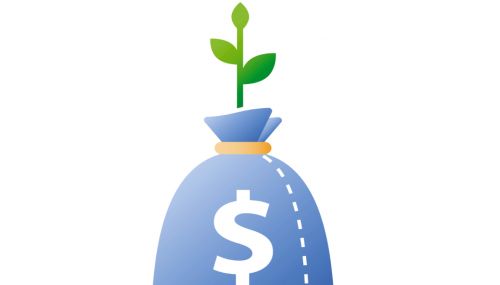All
Media Analyzes Implications of Dropping Oil Prices
Oil prices have tumbled by more than 25 percent since this summer, and while that translates to lower prices for gasoline and heating oil for U.S. consumers, much of the news analysis is focused on geopolitical and macro-economic implications.
Before delving into the punditry, let’s take a moment to appreciate one essential fact: Heating oil prices are down. The U.S. Energy Information Administration last week kicked off its Winter 2014-15 reporting schedule, and the season’s first heating oil price data was a revelation. The average price for the East Coast was $3.47 a gallon, which is down 38 cents from one year ago. In an era that has been shaped by the decoupling of prices for heating oil and natural gas, any sign of price convergence is welcome news.
The news is actually a mixed blessing for heating oil dealers, as it signals a possible return of extreme price volatility, which unsettles customers and increases hedging costs. Low heating oil prices are a beautiful thing, unless of course you have already purchased your winter fuel supply in a pre-buy arrangement. Given last year’s painful price spikes, pre-buys are popular this year, and a lot of heating oil dealers might feel like they’ve traveled back in time to 2008. That was the year when prices spiked in the offseason, driving a surge in pre-buys, and then fell by $1.40/gallon during heating season. Dealers were forced to deal with a lot of cranky customers who wanted out of their contracts, and no one wants to see a repeat of that nightmare.
It will be very interesting to see how these price swings affect consumer attitudes. In the meantime let’s take a look at what the press is saying about the recent reduction in oil prices. Much of the talk in the media is focused on Russia, which has a lot at stake, according to a recent piece on BusinessInsider.com.
“Russia will struggle to avoid falling into a recession if oil prices are allowed to drop to $80 a barrel — and could face calamity if prices fall below that level,” the site writes. The article cites a Morgan Stanley report stating that for every $10 drop in global oil prices, Russia suffers a $32.4 billion fall in oil and gas exports, which is equivalent to about 1.6% of GDP. “So using these rules of thumb, the recent oil price falls could have wiped out 4.8% of potential GDP growth and knocked almost $60 billion off Russia’s budget revenues,” the article states.
National Public Radio also focuses on the geopolitical implications in a recent piece. NPR notes that the U.S. is producing more of its own oil and reducing its dependence on unstable countries and leaning most heavily on Canada for imports. “Middle Eastern nations account for just three of the top 10 exporters to the U.S., and they account for around 10 percent of U.S. oil needs,” NPR reports.
“From the U.S. perspective, one of the benefits of falling oil prices is the pressure they place on Russia and Iran,” NPR reported. “Both countries are heavily dependent on oil exports at high prices. They face the double whammy of Western sanctions that are also biting. Russia needs an oil price of $100 a barrel and Iran needs around $130 a barrel to balance their budgets, according to The Economist.”
Another potential upside is stimulus for the U.S. economy, according to NPR. “The lower price at the pump effectively serves as a stimulus for consumers that can encourage increased spending to stimulate the economy, the article states. “‘It’s quite possible that Christmas shopping will be much better this year because consumers will be spending less for gasoline,’ economist Philip Verleger told NPR’s Morning Edition.”
NPR says the downside of falling oil prices is that they reflect decreased demand, which in turn reflects a fragile global economy that’s vulnerable to additional shocks.
The New York Times Editorial Board also weighed in with a piece entitled, “The Upside of Lower Oil Prices.” Russia, Iran and members of OPEC will be hurt, although Saudi Arabia has sufficient cash reserves to ride out the downtown, The Times reports. “For the United States, it’s a mixed bag. American oil production is soaring, and lower prices could slow production of shale oil, which is expensive and needs higher prices to be profitable. But lower oil prices mean reduced costs for consumers and businesses and a boost for economies across the industrialized world,” the editorial continued.
CNBC went way out on a limb in a piece entitled “Is the Oil Price Fall More Than Just a Coincidence?” The article suggests that the U.S. could be deliberately manipulating the market to harm Russia. “The U.S. would obviously deny any acquisitions of manipulation and there is no evidence to suggest that this is the case,” CNBC writes.
Another focal point of the coverage is the threat that dropping prices poses to U.S. oil production. Politico writes that, “Falling crude prices will crimp oil producers’ profits and, eventually, deter them from drilling. That hurts the U.S. economy.” The article goes on to state, though, that the positives outweigh the negatives for the U.S. economy. “Amid all the excitement about the rise of U.S. oil production, many appear to have forgotten the United States still consumes far more oil than it produces,” Politico wrote. “A sustained $30 decline in oil prices translates into more than $200 billion a year of savings for U.S. consumers through lower prices for gasoline, diesel, jet fuel and home heating oil. Much of that windfall will be plowed back into the economy as consumers spend their cash, multiplying its impact just like an economic stimulus policy.”
The impact will vary by industry, according to Politico. “So long as shale drilling continues apace, most of the damage from lower prices will be confined to oil companies, which are seeing their profits squeezed. With low enough prices sustained over time, though, investment will start to suffer as well. At a minimum, drillers will be more hesitant to take risks on new development prospects. As low prices bite even more, segments of the economy that enable drilling, like the companies that build pipelines and pumps and drilling rigs, will curb their own investment. In the worst case, even existing equipment would be left idle, further reducing industrial activity.”
Related Posts
 The Possibilities of Renewable Propane
The Possibilities of Renewable Propane
Posted on March 13, 2024
 Innovative Financing Solutions for Energy Businesses
Innovative Financing Solutions for Energy Businesses
Posted on March 12, 2024
 Service, Support and Collaboration Separate Payment Partners From a Payment Processor
Service, Support and Collaboration Separate Payment Partners From a Payment Processor
Posted on March 12, 2024
 Beyond the Gateway
Beyond the Gateway
Posted on March 12, 2024
Enter your email to receive important news and article updates.
